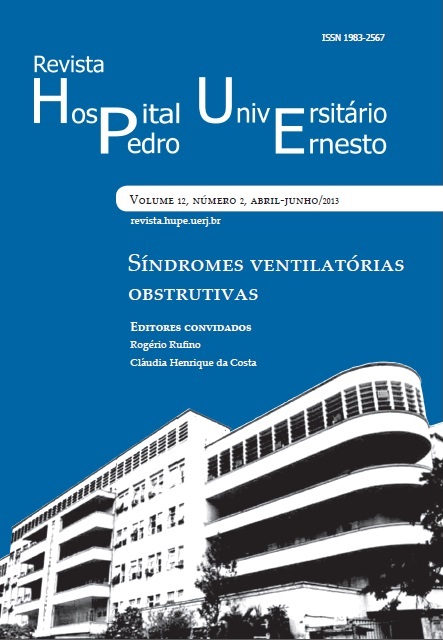Mechanical ventilation in chronic obstructive pulmonary disease and asthma
DOI:
https://doi.org/10.12957/rhupe.2013.8492Abstract
Chronic obstructive pulmonary diseases (COPD) and asthma are characterized by airways obstruction, with consequent dynamic hyperinflation. Mechanical ventilation is necessary when there is no response to medical treatment. Noninvasive mechanical ventilation is used whenever possible, in which case inspiratory muscle rest is the main objective, during which period triggering factors treatment response is awaited. Invasive mechanical ventilation is indicated to those patients who are not candidates to noninvasive ventilation, or to those who do not get better after one hour of this ventilation method. Volume-controlled ventilation and pressure-controlled ventilation are the most frequently used invasive mechanical ventilation methods. There is no evidence that one of these methods is superior to the other in COPD or asthma patients’ mechanical ventilation. Dynamic hyperinflation must be avoided and minimized whatever the ventilator method used. Low tidal volume and respiratory frequency, and high expiratory time must be used for this purpose. In selected cases, aiming alveolar hyperinflation reduction, extrinsic positive end expiratory pressure not above 85% of intrinsic positive end expiratory pressure may be used.Downloads
Published
2013-06-30
Issue
Section
Artigos


